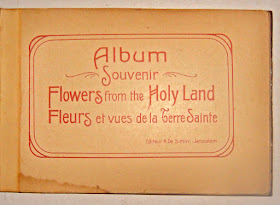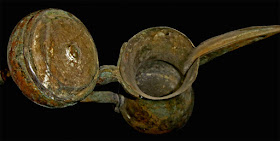This is a coin from the rule of Caliph Al Mansur Ibn Muhammad, though the 2nd Abbasid
Ruler, he generally regarded as the founder of Abbasid Caliphate. He reigned the Caliphate from 754CE-775CE ( 136-158AH)
The coin is made of pure gold and dated 152 AH.
It is customary of Abbasid Caliphs not to inscribe their names on their coins (similar to Umayyad's) as well as their minting places. The coins would have been minted wherever the Caliph is based. According to Historians, Al Mansur shifted his capital city to Baghdad which is known as Madinat As Salam in 762 CE.
Since this Dinar is dated 152 AH ( 769 CE), hence we could safely assume this coin was minted in Madinat As Salam. In addition to that, there is a Dirham struck in the same year with the mint name Madinat As Salam.
This dinar was inscribed with the first statement of the kalima,
“No god but God, unique, He has no associate” in the centre, whereas the margin was inscribed verse 33 of Qur’an Sura 9, “Muhammad is the
messenger of God who sent him with guidance and the religion of truth
that he might make it supreme over all other religions”On the reverse was inscribed the second statement of the kalima,
“Muhammad is the messenger of God”, with the denomination and date in
the margin.
This Dinar was inscribed with Kufi calligraphy on both sides.
Coin Specs
Item : Dinar of Caliph Al Mansur Ibn Muhammad
Obv :
In Margin
محمد رسول
الله ارسله
بالهدى و
دين الحق
ليظهره
على
الدين كله
muhammad rasul allah arsalahu bi’l-huda wa din al-haqq li-yuzhirahu ‘ala al-din kullihi
“Muhammad is the messenger of God who sent him with guidance and the
religion of truth that he might make it supreme over all other
religions”
Sura 9 (al-Tawba), v. 33 (partial)
In Centre
لا
اله الا
الله وحده
لا شرك له
la ilah illa / allah wahdahu / la sharik lahu
"There is no God except Allah. (There is) no partner to him." (Kalima)
Rev :
In Margin
بسم
الله ضرب هذا
الدنر
سنة
اثنتين و
خمسين و
مية
bism allah duriba hadha’l-dinar sana isnin wa khamsin wa mi’a
“in the name of God this dinar was struck the year two and fifty and one hundred”
In Centre
محمد رسول
الله
"Mohammed the messenger of Allah"
Date : 152 AH (769 CE)
Dim :18 mm
Weight : 3.76gm
Denom : Dinar
Metal : AV ( Gold)
Mint : Madinat Salam
Rarity : C
Purchased Price : USD
Read on below excerpt about Caliph Al Mansur from the WIKI :
Al-Mansur was born at the home of the 'Abbasid family after their
emigration from the Hejaz in 95 AH (714 CE). "His father, Muhammad, was
reputedly a great-grandson of
Abbas ibn Abd al-Muttalib, the youngest uncle of
Mohammad; his mother, as described in the 14th-century Moroccan historical work
Rawd al-Qirtas was one Sallama, "a Berber woman given to his father."
He reigned from Dhu al-Hijjah 136 AH until Dhu al-Hijjah 158 AH (754 CE
– 775 CE). In 762 he founded as new imperial residence and palace city
Madinat as-Salam (
the city of peace), which became the core of the Imperial capital
Baghdad.
During his reign,
Islamic literature
and scholarship in the Islamic world began to emerge in full force,
supported by the Abbasid promotion of scholarly research, best
exemplified by the Abbasid-sponsored
Translation Movement. It was under al-Mansur that a committee, mostly made up of
Syriac-speaking
Christians, was set up in Baghdad with the purpose of translating
extant Greek works into Arabic. Due to the Abbasid's orientation toward
the East, many Persians came to play a crucial role in the Empire, both
culturally as well as politically. This was in contrast to the preceding
Umayyad era, in which non-Arabs were kept out of these affairs.
Shu'ubiya
emerged at this time, due to the rising of Iranian autonomy; it was a
literary movement among Persians which expressed their belief in the
superiority of Persian art and culture, and catalyzed the emergence of
Arab-Persian dialogues in the 9th century CE.
In 756, al-Mansur sent over 4,000 Arab mercenaries to assist the Chinese in the
An Shi Rebellion against
An Lushan; after the war, they remained in China.
Al-Mansur was referred to as "A-p'u-ch'a-fo" in the Chinese T'ang Annals
.
Al-Mansur died in 775 on his way to
Mecca to make
hajj.
He was buried somewhere along the way in one of hundreds of graves dug
in order to hide his body from the Umayyads. He was succeeded by his
son,
al-Mahdi.
According to a number of sources,
Abu Hanifa an-Nu'man (who founded a
school of
jurisprudence) was imprisoned by al-Mansur.
Malik ibn Anas,
the founder of another school, was flogged during his rule, but
al-Mansur himself did not condone this – in fact, it was his cousin, the
governor of Madinah at the time, who ordered it (and was punished for
doing so).
















































